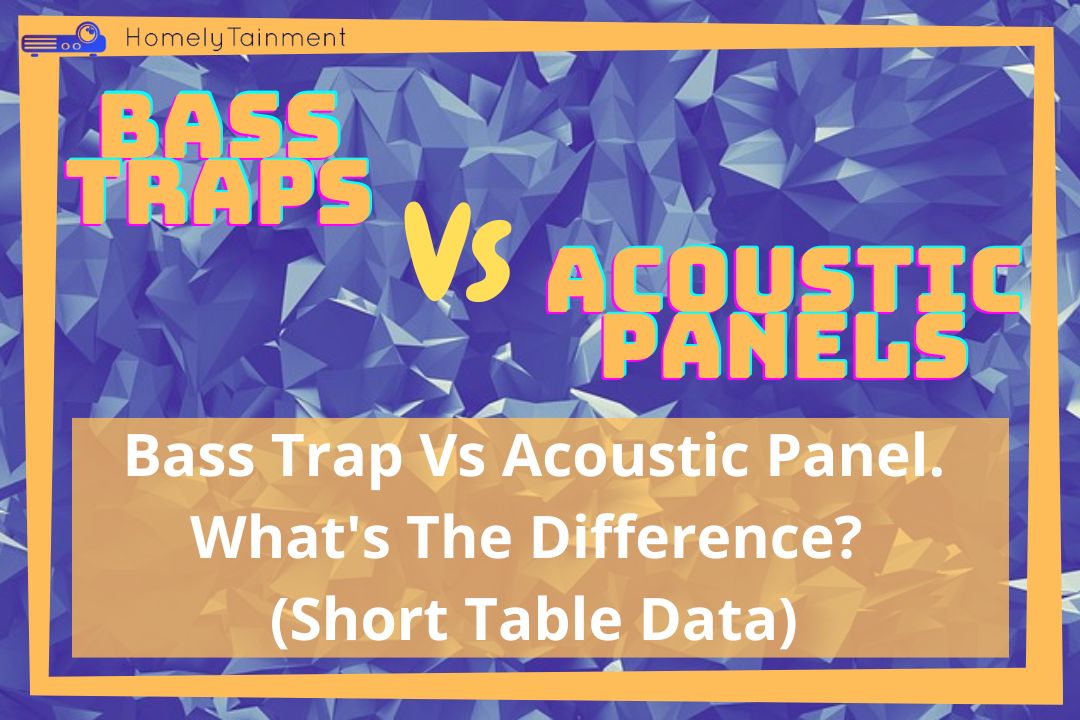
Homelytainment earn commissions (at no additional cost to you) if you purchase products from retailers after clicking on a link from our site.
The bass is an integral part of the home theater. The realism of the movies, music, and games happens due to the deep and accurate bass. Everyone set up a home theater because they want to be immersed in the universe of movies, music, and games.
Now, you will know why the bass is so important to us.
Here are the 9 cool steps that will help you to get the best bass possible: At A Glance:
- Acoustically Treat The Theater Room
- Remove Dead Bass Spots
- Increase the bass on speakers
- Calibrate the sound with software or a mic
- Don’t blindly follow the subwoofer location instructions of the bloggers
- Calibrate the subwoofer individually with an SPL meter
- Get more Bass by tweaking the subwoofer Settings
- Get more bass out of the receiver
- Choose the right Hz for the best Bass
Don’t forget to check the result of the poll that I have conducted in a Facebook group. Many home theater owners have revealed their favorite steps to increase the bass.
Acoustically Treat The Theater Room
The first and foremost step will be to acoustically treat the theater room. No matter how good the subwoofer is or how best all other equipment is, if the theater room is not acoustic-friendly, then you will not get the bass you desire.
The theater condition makes or breaks the sound quality of the system. That’s why it is very significant to acoustically treat it.
Two steps come in this section. First, you have to stop the sound reverberation in the theater room. You have to choose soft and dense materials for your home theater furniture and decor. You will be required to install the acoustic panels as well. Read my this guide on how to install acoustic panels properly?
The next step will be to stop the sound of bleeding out of the room and the outside sound of bleeding inside. To stop this sound bleeding, you will have to soundproof the theater room. Read my this guide on how to soundproof a home theater?
Remove Dead Bass Spots
These dead bass spots occur in almost all the theater rooms. One subwoofer can’t fill the room properly, that’s why there will be dead spots in the theater room.
To remove these spots. First, you will have to identify them. The most common identification method is to crawl throughout the theater room while keeping the subwoofer thumping by any tone.
Mark those places where you feel no or less bass. Install another subwoofer in a position that will fill these identified dead bass spots.
The ideal placement for the dual subwoofers will be to place the subwoofers at opposite corners that create a diagonal to each other. This is the ideal placement, but still don’t blindly follow other people’s instructions on subwoofer placement.
Keep reading. I will tell you why.
Read my guide on Are dual subwoofers worth it. You will get another poll data there to read.
Don’t blindly follow the subwoofer location instructions of the bloggers
I am saying this because each room is different from the other people’s rooms. One placement will work in one room, and that same placement will not work in another room.
That’s why I never follow the rule of thumb or general rules for the subwoofer locations.
Always try to find the location that better suits your taste. How to find it? Well! Continuously change the location and angles of the subwoofer throughout the room.
Choose that one angle and location in which its bass hit you right in your chest. Not like it almost gives you a stroke haha but when you feel it right.
Know more from this youtube video.
Increase the bass on speakers
After acoustically treating the theater room, you will already be feeling a noticeable bass out of the speakers. But if you are not feeling, then follow the below two steps.
The best thing to get more bass out of the speaker is to tweak the subwoofer setting in the AV receiver settings.
Choose the subwoofer setting as LFE+Main. Now, the main speakers will play their ass and the subwoofer will play the bass of all other speakers’ lower-end frequencies. In this way, you will get a bass boost. The Main is the front left and right speakers. But if you want to ensure more bass, then follow the below step too.
But if you want more bass out of it, then the best thing to do is to choose those front left and right speakers that can go to 40Hz.
When you choose speakers that can hit the 40 Hz frequencies perfectly, then place them in the front left and right positions.
Now, select a 40Hz frequency crossover for these speakers. Now, a few of the upper ends of the bass will also be played by these speakers. But when the frequency reaches below 40 then the subwoofer will play it.
Calibrate the sound with software or a mic
Calibrate the dB levels of each speaker with the help of a calibration mic and software. There are many well-known apps but the Audyssey calibration system nowadays comes with many AV receivers.
This software will calibrate the sound of the entire theater system. There are many more such apps that help in the calibration process.
These mics and apps calibrate the sound according to the room environment, and also they integrate the sub very well with all the speakers.
But if you still don’t feel like there is not enough bass for me. Then calibrate the subwoofer individually and focus it on your seating area.
Calibrate the subwoofer individually with an SPL meter
Now, you have to calibrate the subwoofer alone and according to your seating area.
What do I mean by“ according to your seating area”? The SPL meter is a device that will measure the pressure of the subwoofer in your seating area.
Hold the SPL meter in your hand and sit in your seating area. Now, start measuring the pressure of the subwoofer with the SPL meter and start sending the test tones from the sub.
Up the dB level of the subwoofer on the AV receiver unless you start getting the 80dB level in your seating area. But don’t go higher than 80dB. It is harmful to human ears.
Read my guide about the best SPL meter for home theater. You will get the review and instructions on how to do it.
Get more Bass by tweaking the subwoofer Settings
First, you have to connect the subwoofer with the LFE connection method.
Next, you have to up the level of the subwoofer with a knob that is provided at the back of the subwoofer.
Keep the knob at the minimum and increase it gradually and check which level is the best for you. I recommend keeping it in the middle, but you can come up with your own level.
Get more bass out of the receiver
Keep all the speakers to “small” in the AV receiver settings. In this way, the speakers will send lower-end signals to the subwoofer. The subwoofer is the best candidate to produce bass out of these lower-end frequencies.
Next, you have to choose the subwoofer option as LFE+Main. If your front left and right speakers are Hi-end and you want to utilize their bass too.
Choose the right Hz for the best Bass
Choose 120Hz as the frequency crossover for the subwoofer in the AV receiver settings. This will not let the subwoofer play frequencies higher than 120Hz. Due to these crossover settings, you will get accurate, tight, and deep bass. But make sure to connect the subwoofer with the LFE connection option.
Read the complete crossover settings for all the speakers in surround sound. I have added those crossover settings that I used by myself.
What would you prefer to get the best bass in the home theater? (FB Poll)
| Poll Options | Poll Stats |
|---|---|
| Subwoofer Placement and Its integration with the main | 67.81% |
| Home theater acoustics treatment | 18.39% |
| Playing with the AV receiver and subwoofer settings | 13.79% |
I conducted this poll in a Facebook group
FAQs
What makes a subwoofer hit harder?
A good build driver, box, suitable crossover settings, perfect location, and room acoustics will make the subwoofer hit harder.
Not only does one factor impact the bass quality of the subwoofer, but all of them combined will influence the quality of the subwoofer.
How can I make my subwoofer more powerful?
Turn up its level, tweak its angle, tweak its location, and acoustically treat the theater room. This will make the subwoofer more powerful.
How do you get deep bass?
Don’t increase the frequency crossover for the subwoofer by more than 120Hz, and also look for the user manual that shows what crossover settings the manufacturers are suggesting.
When you set the crossover to more than 120Hz, then it will push the subwoofer driver to go more than its limits and to those limits for which it is not engineered. It will give you shallow and inaccurate bass.
Is bass boost bad for subs?
Driving the subwoofer at maximum volume will never damage it, but if you boost the bass more than the maximum limit of what a subwoofer is capable of then yes it will damage it over time.
If you boost this bass with special software and push the subwoofer to go off-limits, then it is dangerous for the sub.
Helpful Resources For The FAQs To Read More
- This was my opinion, read more from this discussion on AVSForum. (Resource for the first answer)
- This was my opinion, read more about it on Ecoustics Blog. (Resource for the third answer)




